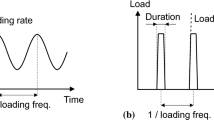Summary
A multiple purpose linear test rig, capable of delivering a kinetic energy of 5 · 105 Nm at a maximum velocity of 100 m/s, has been developed and built at the Lund Institute of Technology. With this rig it is possible to work with small as well as fairly large test specimens or structures.
The driving system of the test rig uses compressed air as energy source. This makes the rig both inexpensive and easy to build and the operational costs are very low. The desired velocity is obtained by appropriate setting of the pressure or/and the volume of the air. The length of the acceleration path is 30 m. By using a tank volume of 3 m3 and a pressure of 700 kPa a velocity of 100 m/s is reached at the end of the path with an accelerated mass of 100 kg. The sledge itself can be designed as a test equipment or it can be the carrier of a desired equipment. The paper also describes the design of a light-weight carrying sledge which can be arrested in only 0.1 m from the maximum velocity of 100 m/s.
The test rig has been used for various kinds of experiments, some of which are described in the paper as examples of the utility of the rig:
-
Dynamic tensile tests were performed on a mild carbon steel. The main purpose was to study how the energy absorbed and the elongation vary with the velocity. Tests were made at velocities up to 62 m/s.
-
Shock absorbers consisting of stainless steel tubes were investigated. The test rig was used to accelerate a heavy mass, which was then arrested by axial buckling of the tubes.
-
Injuries caused by safety belts were studied by performing experiments on pigs with decelerations up to 28g from velocities up to 20 m/s.
Access this chapter
Tax calculation will be finalised at checkout
Purchases are for personal use only
Preview
Unable to display preview. Download preview PDF.
Similar content being viewed by others
References
Wihlborg, G. Calculations and design of the mechanical parts of a compressed air driven acceleration plant for impact tests. Swedish Solid Mechanics Reports, Lund Institute of Technology (1975)
Wihlborg, G. The control system and the basic recording equipment of a compressed air driven acceleration plant for impact tests. Swedish Solid Mechanics Reports, Lund Institute of Technology (1975)
Wihlborg, G. High velocity tensile tests on a mild steel. Swedish Solid Mechanics Reports. Lund Institute of Technology (1976)
Löwenhielm, P. et al. Influence of post mortem changes on experimental safety belt injuries. Zeitschrift für Rechtsmedizin, 171–182 (1977)
Author information
Authors and Affiliations
Editor information
Editors and Affiliations
Rights and permissions
Copyright information
© 1987 Springer-Verlag, Berlin, Heidelberg
About this chapter
Cite this chapter
Wihlborg, G. (1987). Design and Applications of a Rig for High Energy Impact Tests. In: Kawata, K., Shioiri, J. (eds) Macro- and Micro-Mechanics of High Velocity Deformation and Fracture. International Union of Theoretical and Applied Mechanics. Springer, Berlin, Heidelberg. https://doi.org/10.1007/978-3-642-82767-9_3
Download citation
DOI: https://doi.org/10.1007/978-3-642-82767-9_3
Publisher Name: Springer, Berlin, Heidelberg
Print ISBN: 978-3-642-82769-3
Online ISBN: 978-3-642-82767-9
eBook Packages: Springer Book Archive




